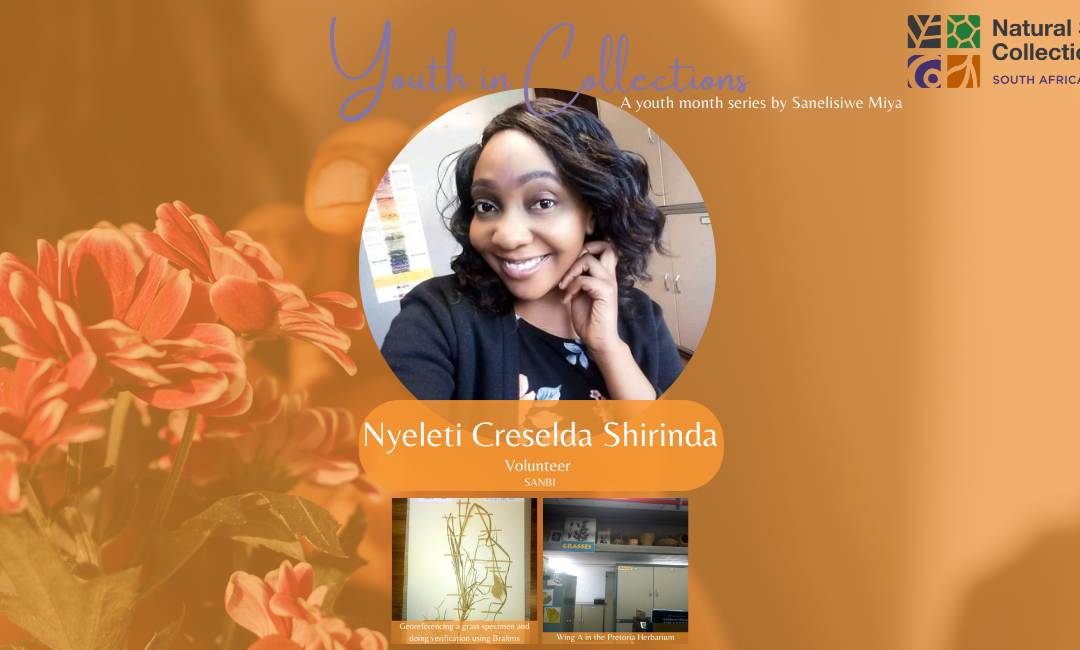Qualifications: Bachelor of science in Botany and Zoology.
Q: What inspired you to make this career choice?
A: My childhood experience inspired me to follow this career path. I grew up in the woods and had always loved plants and animals. The place we stayed at had a lot of vervet monkeys. My interest in them and the other fauna and flora from that area made me realize – “I’m a nature person”. I had actually wanted to study for a BSc. in Environmental Sciences, but when I discovered that there’s a course in Botany and Zoology being offered, I didn’t resist myself an opportunity to try. After my studies, I had 2 years gap experience without finding relevant posts. So from 2017 to 2018, I worked for retail. In 2019 I had no idea I would be so fortunate as to find myself in the herbarium working with collections. It was like a dream come true.
Q: Give a brief description of what your job entails.
A: I am a former DST-NRF 2019/2021 intern. My internship contract ended this March, so I’m currently working as a volunteer in the herbarium. My main focus is on the Poaceae family (grasses) and the key performance areas are:
- Physical and scientific curation of herbarium specimens.
- Maintaining the BODATSA database.
- Contributing to the Flora of KZN project. I compiled 437 species in 135 genera.
- The scientific compilation of wetland grass species chapters, having compiled 138 species in 65 genera.
- To undertake one grass species for risk analysis based on the framework for ASRARP (Alien species Risk Analysis panel) review.
- Publish popular articles (Plant of the Week – POW) focusing on grasses.
- Outreach for school groups: teaching them herbarium activities.
Q: How does it contribute to Collections Management?
- Herbarium duties contribute to the growth and maintenance of collections.
- I ensure that I compile the correct information needed for publications.
- Physical and Scientific Curation plays a huge role in contributing to the collection management and ensuring that people seeking the specimens find them where they are supposed to be.
Q: What is the most exciting aspect of your job?
A: Working on grasses is very interesting. Grasses form part of a huge family so they can be very tricky because many look very similar, yet are quite different. My working on their distribution range, more especially in southern Africa, gives me the enthusiasm to know more about this family. I enjoy mounting and filing as well because it taught me to handle specimen well. Educating school learners about herbarium essentials is also quite pleasurable.
Q: What advice would you give to young people considering a career within Scientific Collections Management?
A: My advice would be: “They must be willing to take risks. Sometimes it’s not about following your passion, but about exploring a new career path. In the field of collections you never cease to learn. This field is quite broad. I am also motivated to further my studies following this career path”.
Q: What does Leadership mean to you?
A: Leadership to me means making a shift from self to service. As a volunteer I believe by doing so, I am bringing an immeasurable amount of fulfilment to the host institution. Learn to do things with intention and plan your day ahead.

